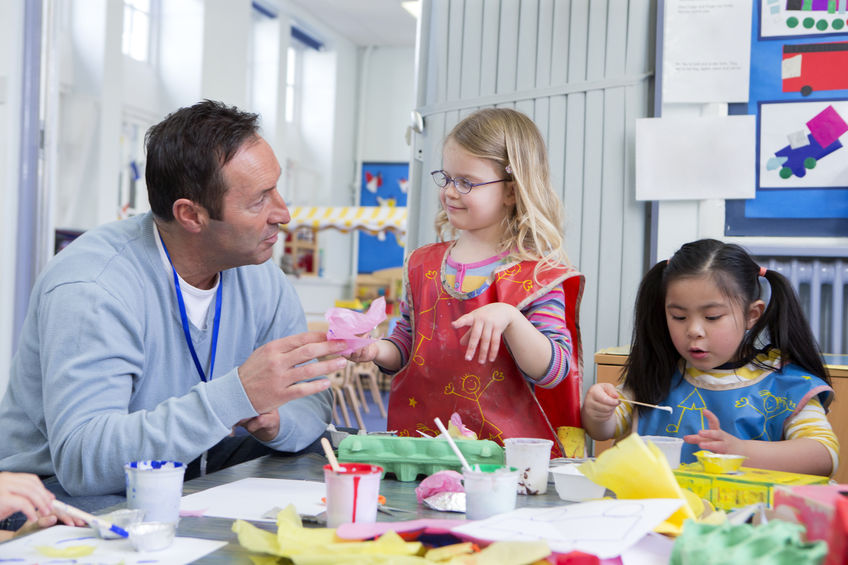
Developmental Disabilities
How To Teach Children With Autism
How To Teach Children With Autism:
- Create a consistent, structured routine.
- Use clear, concise verbal instructions.
- Allow extra time for them to process.
- Represent concepts visually.
- Promote communication through language exercises.
- Utilise their interests and talents.
- Avoid artificial light and sounds.
- Foster a supportive classroom.
Teaching children on the autism spectrum can be extremely rewarding, but it’s not without its challenges. In fact for those who haven’t had much prior experience, it can feel overwhelming – especially with young children who can’t explain how they feel or why they’re upset. So to help you manage these situations effectively and cater to the needs of all those in your care, we’ve put together a list of simple guidelines on how to teach children with autism in early years settings.
How To Teach Children With Autism
1. Create a consistent, structured routine.
Those with autism can really struggle with changes to their routine, so try and define a regular schedule for the day, and stick to it as much as possible. Children with autism will really benefit from knowing what’s coming next, and how long things are likely to last. Using visual cues and/or a timer to indicate what activity you are working on can help too. When you do have to make changes, try and implement them in a gradual, staggered manner, to lessen their impact.
2. Use clear, concise verbal instructions.
An important thing to bear in mind when giving instructions is that children with autism can have a lot of difficulty processing long verbal strings. Even when you organise those instructions into a sequence, retaining all the steps in the right order is a huge challenge for them. Make things easier by delivering short, direct verbal instructions, one step at a time.
 Support children with autism by giving them instructions one step at a time.
Support children with autism by giving them instructions one step at a time.
3. Allow extra time for them to process.
Patience is absolutely key in learning how to teach children with autism. After you’ve delivered an instruction, it will often take these children longer to process and respond to what you want them to do, so give them the time and space they need to do that. Don’t overcomplicate by repeating or rephrasing what you just said, as this will only slow things down.
4. Represent concepts visually.
Because processing language is a particular challenge for children on the autistic spectrum, it’s vital that you include visual demonstrations and aids in your explanations. Use gestures as much as possible when you’re talking, as well as objects and pictures. This will help children understand you better, but also associate words with concepts going forward.
The same principle applies when enabling a child to communicate effectively with others. If expressing emotions through language is hard, give them the opportunity to show how they feel in another way – for example using emotion pads. You could then use emotion flashcards to help them gradually match feelings to words.
Is Your Setting SEN Ready? – Free Email Course
5. Promote communication through language exercises.
The early years is a key time for developing those core communication skills, so it’s important that you provide children with extra help and support if they need it. Set some time aside for language activities, focusing on phonics and differentiating consonant sounds, which will really be of benefit. Use pictures and language cards to help expand their vocabularies too – but be aware that many children with autism are ‘mono-channel’ (they can only process one sensory input at a time), so make sure you do this in a calm environment so as to not overload them.
 Simple language exercise can really help develop communication skills
Simple language exercise can really help develop communication skills
6. Utilise their interests and talents.
On the other hand, one of the great strengths of children with autism is that they are often able to concentrate on one particular item or topic for long periods of time, and develop an extensive knowledge of it (e.g. maps, the solar system, trains). Utilise that ability and focus by incorporating their favourite subject into other activities, for example counting planets, a train alphabet, or an art project involving colouring/decorating a map.
As well as their interests, it’s just as important to encourage their talents. Children with autism frequently excel in drawing and working with computers, so make sure you give them the opportunity to explore their individual strengths, which could be hugely important to them in the future. Focus on the positives rather than the negatives!
7. Avoid artificial light and sounds.
A big trigger for many children with autism is harsh, unnatural sensory stimuli, such as fluorescent lights, flickering screens, buzzing appliances and squeaking furniture. Be aware of those sources within your setting, and try and minimise their presence/impact. For example, using lamps is much more calming than overhead lights, and carpet or tennis balls on the bottom of chair legs can stop them making a sound when they move. If your children have their own table/place within the room, try and place a child with autism away from possible triggers, and next to the window if possible.

8. Foster a supportive environment.
Finally, don’t forget that one of the most important factors is creating an environment in which every child feels included and valued. Without singling out any individuals or type of difficulty, encourage children to celebrate difference and the value of helping others. When doing activities, avoid any sense of segregation – the social interaction children with autism get from integrating is vital for their development as well their confidence.
Because every child is different, learning how to teach children with autism is an ongoing process. When things are difficult, just remember how much of a positive impact your efforts could have on a child’s development. Read more about how to create an autism-friendly nursery environment here.







You must be logged in to post a comment Login